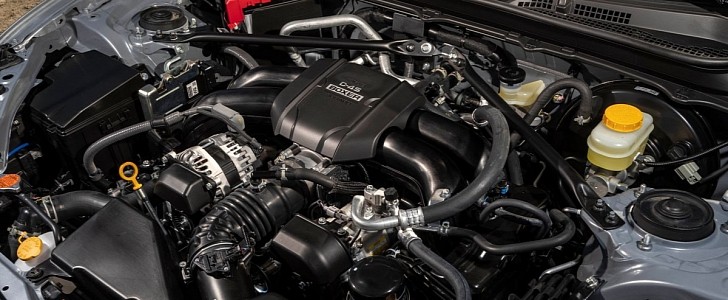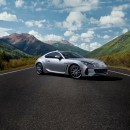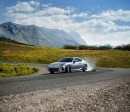Don’t know about you, but I am definitely surprised that Subaru and Toyota decided to spend money on making the second-gen BRZ and 86 happen. My surprise is best explained by sales figures in the United States of America, namely 2,334 and 3,398 units in 2019.
When the two Japanese automakers set out to develop the first generation of the boxer-engined coupe, they knew it wouldn't be a profitable car but an emotional car designed to level up brand awareness. Emphasis on “coupe” because the open-top body style never turned into reality. Hearsay regarding a turbocharged option also proved to be false, and this gets us to the redesigned models for 2022.
Speaking to Road & Track, director of communications Dominick Infante explained that forced induction would have translated to one too many compromises. For starters, going turbo “would have required the engineers to raise the engine height, which in turn would have raised the center of gravity significantly.”
Handling is directly affected by the car’s center of gravity, and a turbocharger would also add weight because forced induction means a lot more than just a boost-hungry snail. That’s why Subaru decided against the force-fed version of the 2.4-liter engine, introduced a few years ago by the Ascent seven-seat crossover.
With the physics lesson over, think about the increase in production costs and MSRP. The BRZ is already expensive for many potential customers at $28,845 excluding destination charge, more so if you bring the Ford Mustang into the equation.
The Chevrolet Camaro and Dodge Challenger with four- and six-cylinder power also happens to be more affordable. Adding insult to injury, the Toyota GR Supra 2.0 is retailing at $42,990 in the U.S. while the 3.0-liter version is $50,990.
Is it really shocking that sports cars don’t sell as well as they used to? Clearly not. As much as I love great-handling machines, I can’t point my finger at the good people out there who prefer to spend that kind of money on a crossover or a truck.
On an ending note, you can still get a turbo upgrade if you really want more horsepower and torque from your free-breathing boxer to the detriment of reliability. MAPerformance is one of a handful of companies that offers a complete turbo kit for the only rear-wheel-drive Subaru on sale today. Priced at $3,989.00 before options, the kit promises at least 300 more horsepower on pump gas.
Speaking to Road & Track, director of communications Dominick Infante explained that forced induction would have translated to one too many compromises. For starters, going turbo “would have required the engineers to raise the engine height, which in turn would have raised the center of gravity significantly.”
Handling is directly affected by the car’s center of gravity, and a turbocharger would also add weight because forced induction means a lot more than just a boost-hungry snail. That’s why Subaru decided against the force-fed version of the 2.4-liter engine, introduced a few years ago by the Ascent seven-seat crossover.
With the physics lesson over, think about the increase in production costs and MSRP. The BRZ is already expensive for many potential customers at $28,845 excluding destination charge, more so if you bring the Ford Mustang into the equation.
The Chevrolet Camaro and Dodge Challenger with four- and six-cylinder power also happens to be more affordable. Adding insult to injury, the Toyota GR Supra 2.0 is retailing at $42,990 in the U.S. while the 3.0-liter version is $50,990.
Is it really shocking that sports cars don’t sell as well as they used to? Clearly not. As much as I love great-handling machines, I can’t point my finger at the good people out there who prefer to spend that kind of money on a crossover or a truck.
On an ending note, you can still get a turbo upgrade if you really want more horsepower and torque from your free-breathing boxer to the detriment of reliability. MAPerformance is one of a handful of companies that offers a complete turbo kit for the only rear-wheel-drive Subaru on sale today. Priced at $3,989.00 before options, the kit promises at least 300 more horsepower on pump gas.
















































